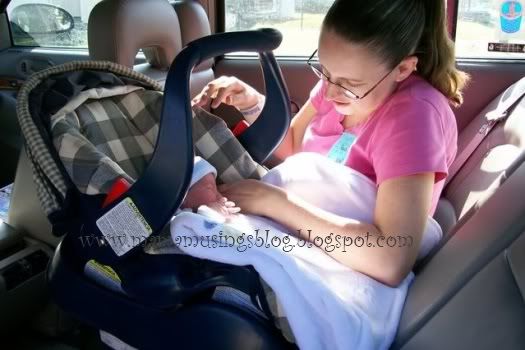
First and foremost, I’d like to thank my editor
Car Seat Safety Technician, Raelynn Dalquist.
Soon after I found out that I was pregnant, I cracked open the books. There are so many things to make decisions on, from what kind of diapers to use, to what kind of car seat to buy. Ever since then, car seat safety has become a passion of mine. After all, isn’t our number one job as a mommy, to protect our child? The first thing I noticed is that there are so many things that most people don’t realize.
Did you know that you should never buy a second-hand car seat from someone you do not know? Do you know why? There are two reasons. First, you never can be sure that the car seat is in good working order. Sure the lady on Craigslist says it’s never been in an accident but how do you know? You also don’t know the seat was cared for correctly. For example, you are not supposed to submerge the harness in water as it can cause the webbing to deteriorate. Knowing the history of the seat is so important.
The second reason surprised me. Car seats expire! What? They aren’t food or medicine, how can they expire!? Plastics deteriorate over time, especially when sitting in hot cars, in direct sunlight. In addition, safety standards change over time, so what was safest 5+ yrs ago, may not be safe anymore. Many car seats have their expiration date stamped on the back. If not, there will be a date of manufacture on the seat, and you need to consult the manual to find out how many years it’s good for. Most are good for 6 years, but there are some that are good for 7-10yrs.

You will sometimes hear parents choose a certain brand of car seat because it’s “safest.” The safest car seat is the one that fits your child, fits your vehicle and is used correctly every time. A seat should be installed tight enough that there is less than 1 inch of movement side-to-side or front-to-back at the belt path. Use LATCH or the seat belt, never both at the same time. Both are safe, so use whichever method allows the best install with your seat in your vehicle. Most vehicles do not allow LATCH usage in the center position, so check your manual. And while not required by law in the U.S., using the top tether when forward-facing reduces head excursion in a collision by up to six inches!
Always read your manual for not only your car seat but your vehicle as well. That is the only way to be completely sure you’re installing car seat correctly. Then take it to be inspected: http://www.nhtsa.gov/cps/cpsfitting/index.cfm
Lastly, while money should not come in the way of safety, sometimes it’s unavoidable. Luckily, there are places that can help. Sometimes local health departments, police/fire departments, local churches, WIC, and car and health insurance companies will sell car seats at discounted prices. The Kyle David Miller Foundation also has a program for parents that can’t afford car seats.
Some resources:
www.car-seat.org
www.kyledavidmiller.org
Part 2 / Part 3 / Part 4

Most importantly... read your manual~
ReplyDelete